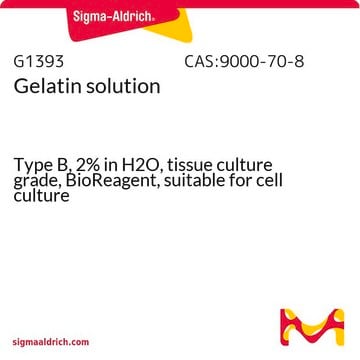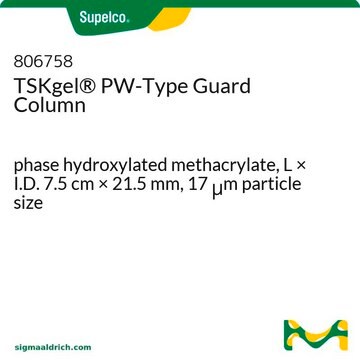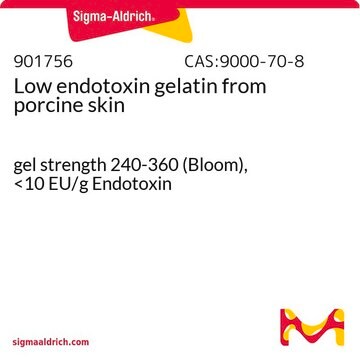G2500
Gelatin from porcine skin
gel strength 300, Type A
About This Item
Recommended Products
biological source
Porcine skin
Quality Level
type
Type A
assay
70-90% (biuret)
form
powder
technique(s)
cell culture | mammalian: suitable
gel strength
~300 g Bloom
solubility
H2O: soluble 50 mg/mL
Looking for similar products? Visit Product Comparison Guide
General description
Application
- for coating glass-bottomed plates for culturing A375 cells and in gelatin degradation assay
- for coating glass slides in the histological studies with brain sections
- in the synthesis of gelatin methacrylate (GelMA) prepolymer for encapsulating cells on to 3D printed hydrogels
- to prepare thiol-functionalized gelatin (GelSH) hydrogel for 3D projection bioprinting
Biochem/physiol Actions
Components
Caution
Preparation Note
Storage Class
11 - Combustible Solids
wgk_germany
nwg
flash_point_f
Not applicable
flash_point_c
Not applicable
ppe
Eyeshields, Gloves, type N95 (US)
Certificates of Analysis (COA)
Search for Certificates of Analysis (COA) by entering the products Lot/Batch Number. Lot and Batch Numbers can be found on a product’s label following the words ‘Lot’ or ‘Batch’.
Already Own This Product?
Find documentation for the products that you have recently purchased in the Document Library.
Customers Also Viewed
Articles
Discussion of synthetic modifications to gelatin, improving the three-dimensional (3D) print resolution, and resulting material properties.
Uncover properties and applications of the cysteine protease papain and find inhibitors, substrates, and other papain products.
Our team of scientists has experience in all areas of research including Life Science, Material Science, Chemical Synthesis, Chromatography, Analytical and many others.
Contact Technical Service












